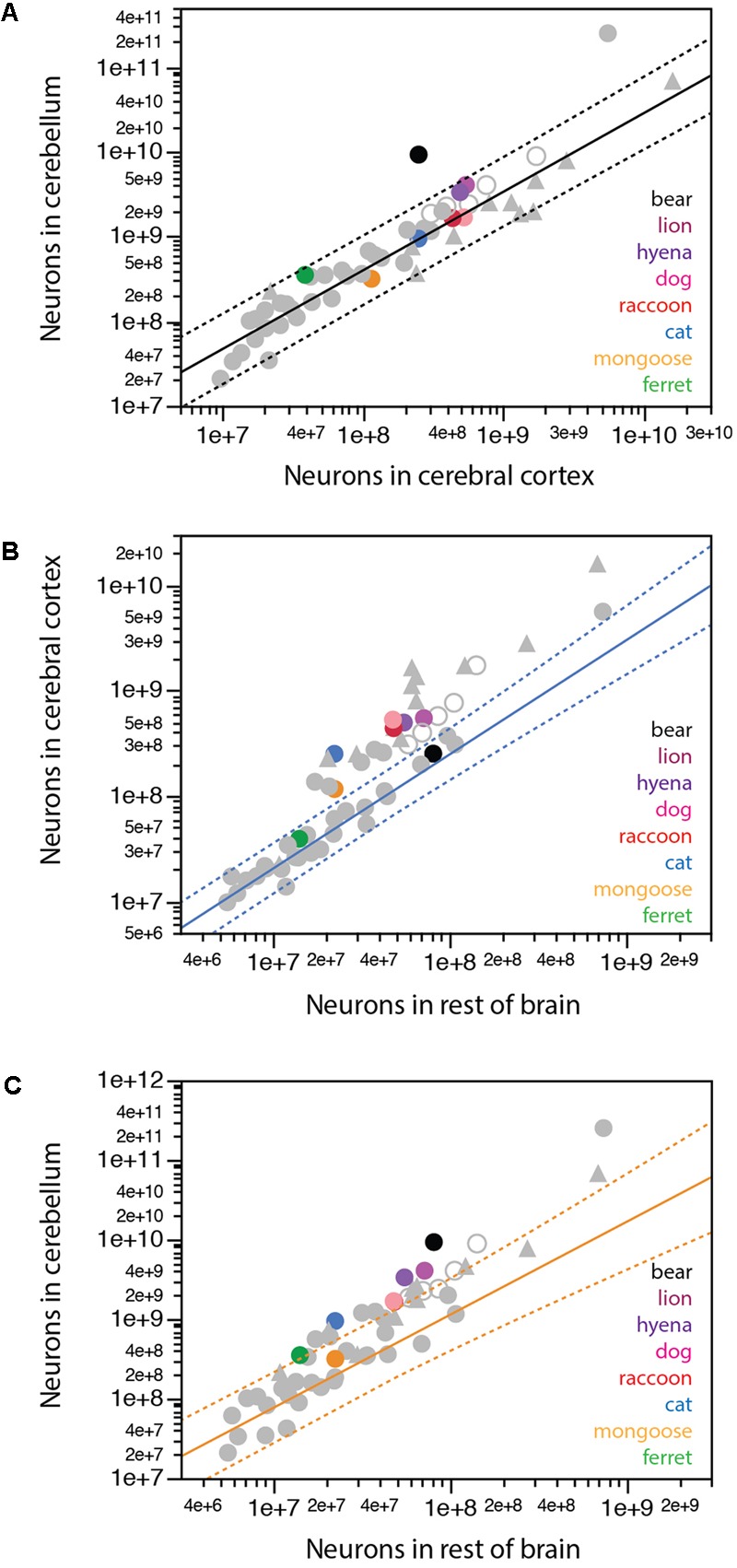FIGURE 7.

Scaling of numbers of neurons across brain structures in carnivorans. (A) Except for the brown bear, carnivorans conform to the relationship between numbers of neurons in the cerebellum and in the cerebral cortex that apply to all mammalian species examined so far, including primates, but excluding the African elephant (exponent, 0.928 ± 0.039, undistinguishable from unity; r2 = 0.929, p < 0.0001, plotted). (B) Only the ferret and brown bear conform to the scaling relationship that describes how the number of neurons in the cerebral cortex varies as a power function of the number of neurons in the rest of brain across glires, eulipotyphlans, and small Afrotherians, with exponent 1.085 ± 0.064, undistinguishable from linearity (excluding the African elephant; r2 = 0.940, p < 0.0001, n = 20, plotted). All other carnivoran species, like primates, artiodactyls and Australasian marsupials, have more neurons in the cerebral cortex than predicted for the number of neurons in the rest of brain for glires, eulipotyphlans and small Afrotherians. (C) Only the banded mongoose among carnivoran species conforms to the scaling relationship that describes how the number of neurons in the cerebellum varies as a power function of the number of neurons in the rest of brain across glires, eulipotyphlans, and small Afrotherians, with exponent 1.170 ± 0.119, undistinguishable from linearity (excluding the African elephant; r2 = 0.842, p < 0.0001, n = 20, plotted).
